The vole scurried into the chicken pen, perhaps hoping to feed on some grains. Big mistake. One of our hens quickly nabbed the small rodent, shaking and then violently pecking it.
The chicken harried her prey for several minutes, paused, and then swallowed the mammal in one gulp. Yuck.
I see the egg carton claims in grocery stores: “our hens eat a vegetarian diet.” Not ours. They will eat any earthworm, earwig or grasshopper they can catch. They also won’t pass up a larger protein snack. Just last week, my wife saw one of our Rhode Island reds catch and quickly devour a quail chick.
When we think of predatory birds, our minds go to the birds of prey: hawks, eagles, owls. The truth is that very few birds are strictly herbivorous. Many eat insects, of course, at least during part of the year. But a lot of birds are also opportunistic and will take much larger prey if the opportunity presents itself.
This applies to birds most of us don’t consider predatory.
I’ve included here six surprising examples of predatory birds. In some instances, the birds are highly omnivorous and will occasionally dine on something surprising. In others, birds have adapted to new sources of protein.
As always, please let me know interesting bird feeding habits you’ve witnessed in the comments.
-
Pelicans
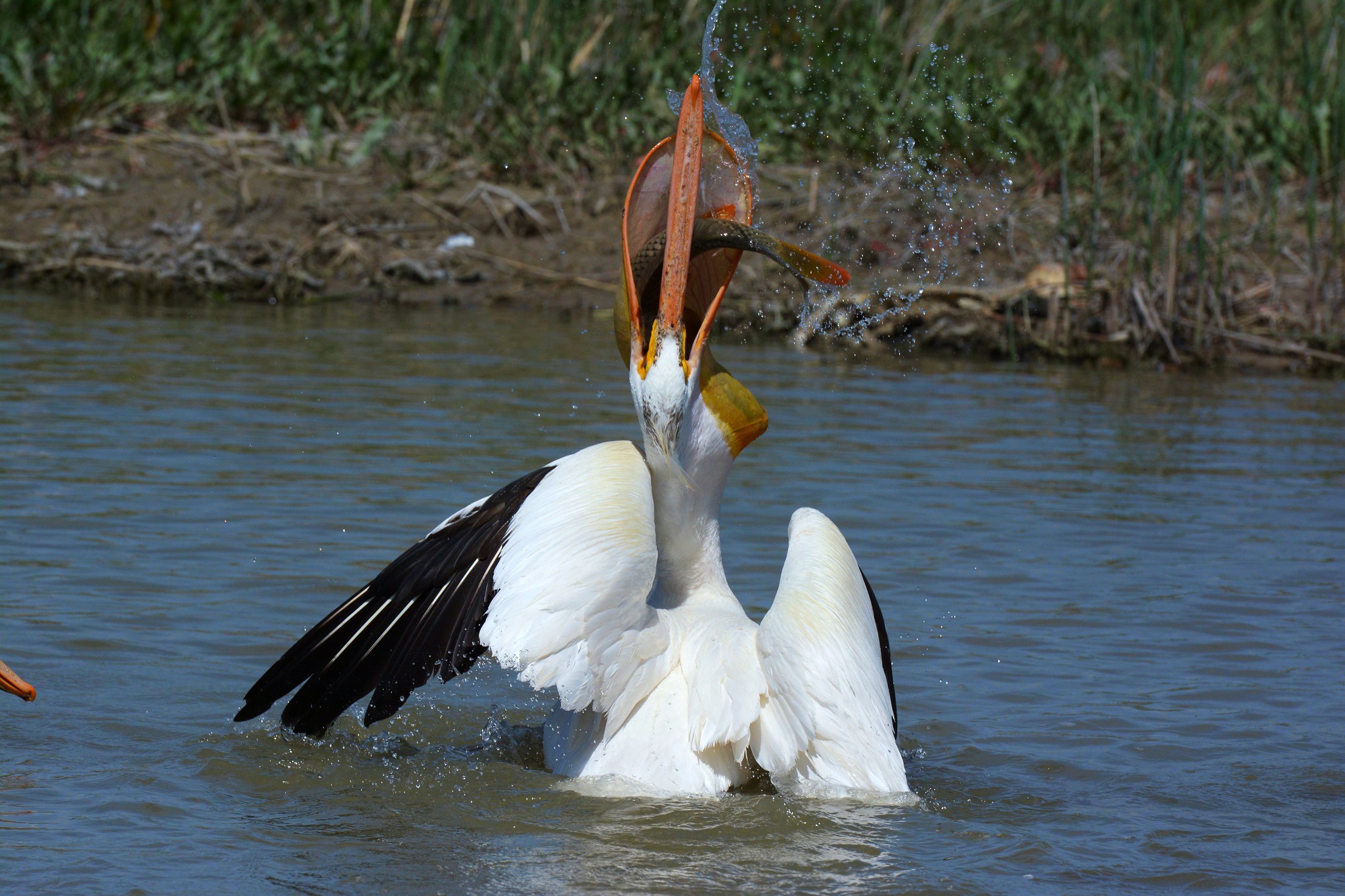
An American pelican swallowing a carp. © Wayne Watson, USFWS / Flickr The world’s eight pelican species are famous for their beaks and large throat pouches. They use these beaks to scoop up fish. American white pelicans focus mainly on small fish, but according to the Cornell Lab of Ornithology, they are quite opportunistic. They will switch to the most abundant prey, like spawning cutthroat trout in the Rocky Mountain West or salamanders and crayfish in the Midwest.
While pelicans generally focus on smaller prey, they will occasionally stuff their pouch with whatever they can fit into it. Including other birds.
The pelicans in London’s popular St. James Park are fed fish by groundskeepers. But they are known to supplement this diet by gulping down city pigeons – sometimes to the horror of tourists. There have been plenty of other documented instances of pelicans eating ducks and gulls. A large bird struggling around a pelican’s throat patch is not a pleasant sight. But it’s become a staple of YouTube videos.
-
Great blue herons
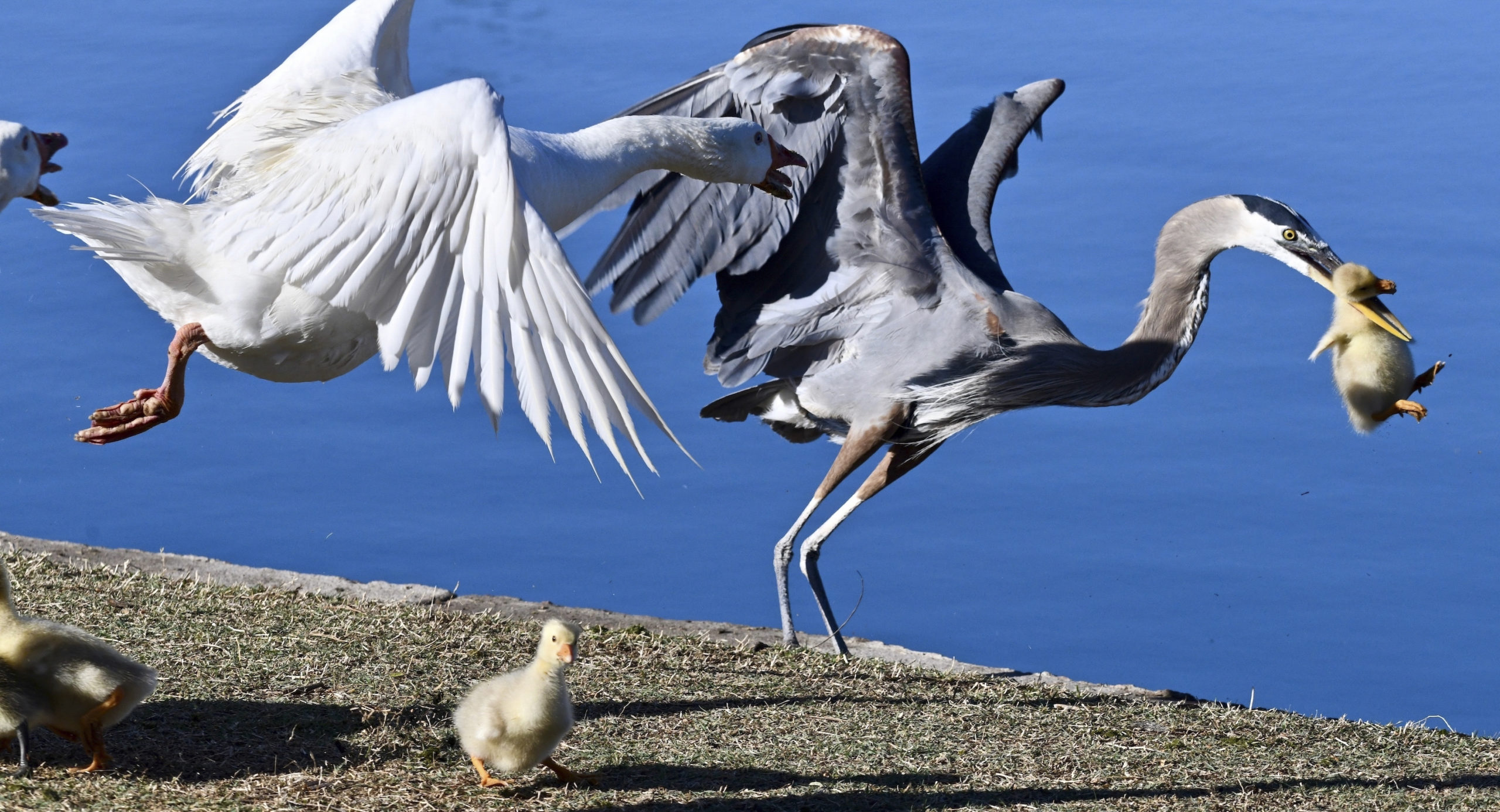
A great blue heron snatches a gosling. © Mark Koster/TNC Photo Contest 2019 When you first notice a great blue heron along a pond, it’s the very picture of stillness. Suddenly, it strikes, likely bringing up a minnow or frog. The heron will also strike much larger prey, often impaling it instead of immediately swallowing. As Cornell notes, herons “use their dagger-like bills to impale larger fish, often shaking them to break or relax the sharp spines before gulping them down.
Herons eat terrestrial prey, too. I often see them lined up in area fields, hunting the aforementioned voles and other small mammals. I also see them stalking around bird nesting areas, and songbirds mob them just as they would a raptor. They even eat snakes and baby alligators, stuffing seemingly impossible prey down their throats.
-
Turkeys
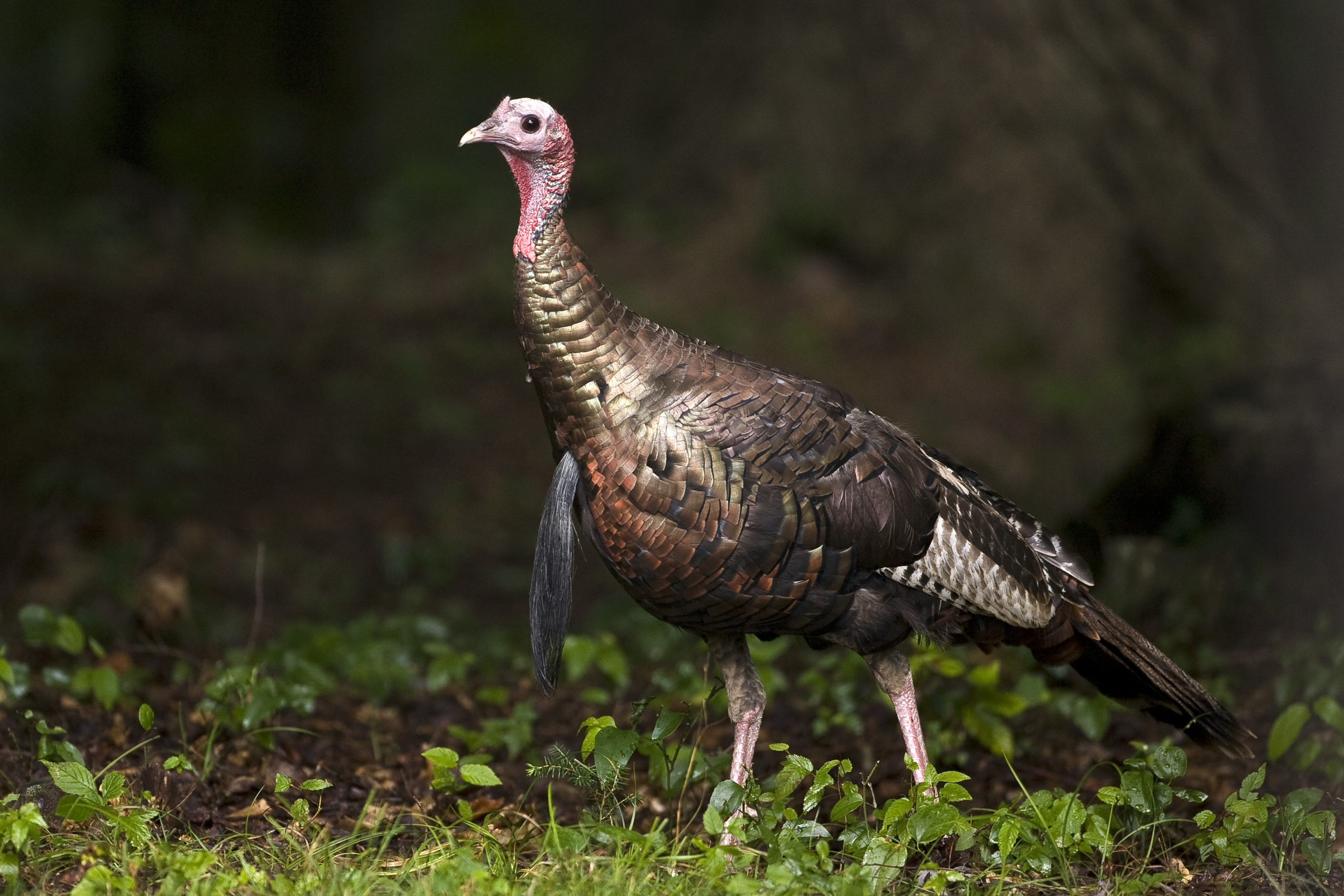
A wild turkey. © Kent Mason The wild turkey, once nearly extirpated from much of North America, have made an astounding comeback. They are now abundant, including in agricultural areas and suburbs. One of the keys to their dramatic recovery is their adaptability and willingness to eat, well, just about anything.
Turkeys eat a long list of fruits and grasses. It also includes animal prey. I’ve seen them gulping salamanders as they stalked through the woods. Researchers have documented them eating tadpoles, bluegills, snakes and lizards.
As ornithologist Joe Smith writes, “In search of protein, they move about the woods like a pack of velociraptors, thrashing up the leaf litter and eating anything that moves.”
-
Crows
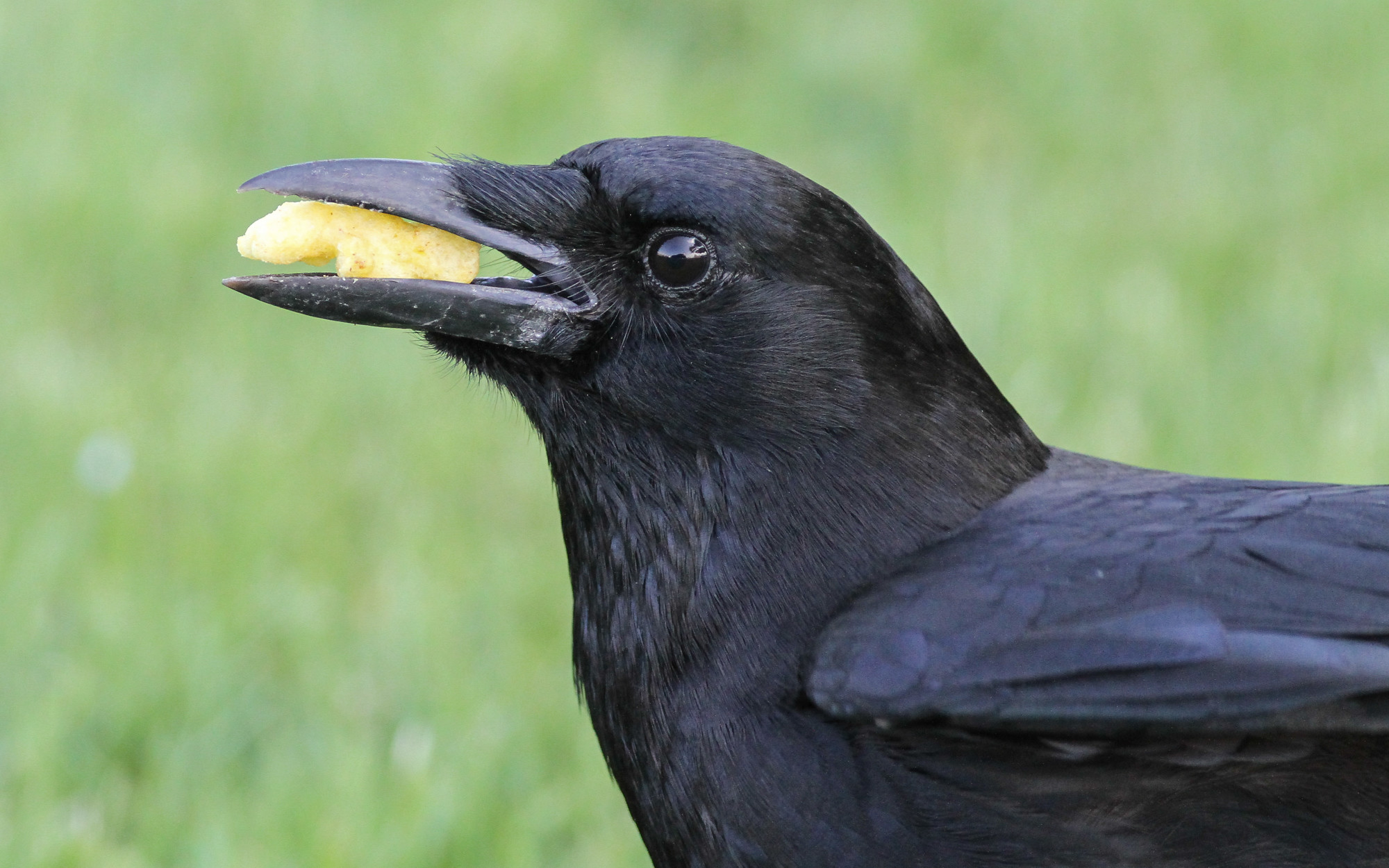
An American crow. © Fyn Kynd / Flickr Unlike turkeys, many people do think of crows as being highly omnivorous. And it’s true that crows have highly adaptable diets. I recall seeing one on a college campus repeatedly pick up a chipmunk and attempt to swallow it. It behaved much like my chicken attacking the vole. The crow was persistent and patient in its attack, but the chipmunk ultimately escaped.
In the case of the American crow, though, much of what we think we know about their diet is likely wrong. The site Corvid Research notes that many people believe roadkill is a key component of crow diets, for instance. However, research found that roadkill makes up less than five percent of their calories.
Similarly, while crows will eat bird nestlings (I’ve seen it several times), other birds are not a significant part of the crow menu. Research has found that the bulk of the crow diet is made up of human refuse (including in more wild areas) and invertebrates.
-
Kelp gulls
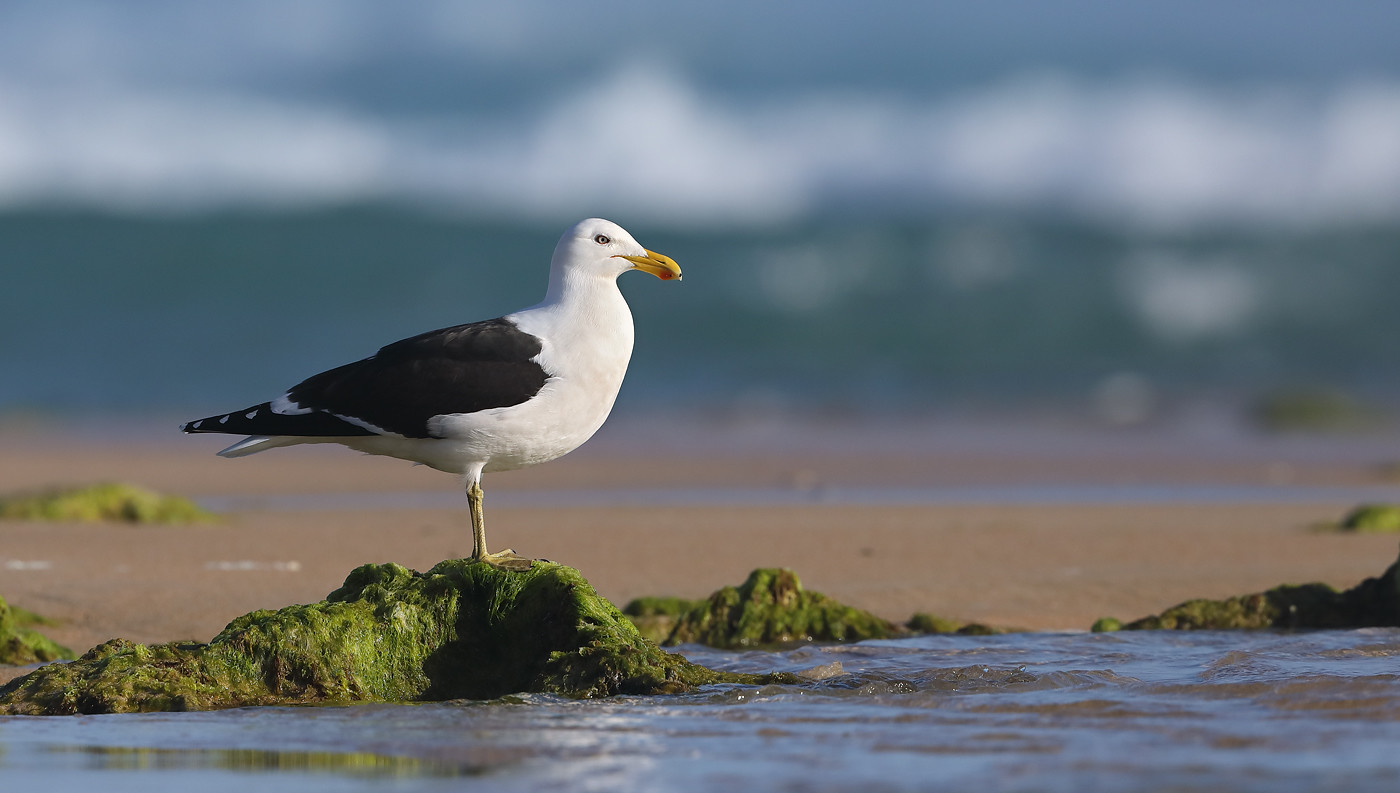
© patrickkavanagh / Flickr In one of the more bizarre feeding behaviors among birds, kelp gulls have learned to eat whale flesh. And while they will scavenge dead whales, that’s not their focus. They eat living whale flesh. You read that correctly.
The kelp gulls pull off strips of flesh and blubber from southern right whales off the Valdes Peninsula in Argentina. They target the whales when they come up for air. This behavior was first documented in 1972, when it was a rare occurrence. That changed rapidly. By 2008, 77 percent of the whales in the area had suffered wounds from feeding gulls.
The kelp gull population has soared thanks to landfills and other human-caused factors. This in turn means more gulls tearing into whale treats.
This is no laughing matter for the whales. They spend a lot of time trying to avoid gull attacks. Evidence suggests they have becoming increasingly furtive when they surface for air. The cycles of predator and prey evolve in strange ways in the Anthropocene.
-
Vampire Finches
I acknowledge up front that feeding on blood is not considered carnivorous behavior. However, the feeding habits of this innocuous-looking little finch are too cool not to include.
The Galapagos Islands’ wildlife is famous for its evolutionary adaptations. The vampire finch is a notable example. This small bird usually feasts on a not-particularly-noteworthy diet of insects and seeds. But during times of scarcity, the finch switches to pecking at blue-footed and Nazca boobies, then sipping their blood.
he finches peck at the boobies until blood is drawn. You would think this would greatly irritate the boobies, but you’d be wrong. They seemingly tolerate the finches. Researchers believe the behavior developed as a mutually beneficial behavior, with the finches pecking parasites off the boobies. When the pest removal literally drew blood, the finches adapted to a new food source.
In the natural world, it is never a good idea to pass up an easy meal. Sometimes we might find those meals gross and disturbing. But for birds and other wildlife, it’s simply a matter of survival.
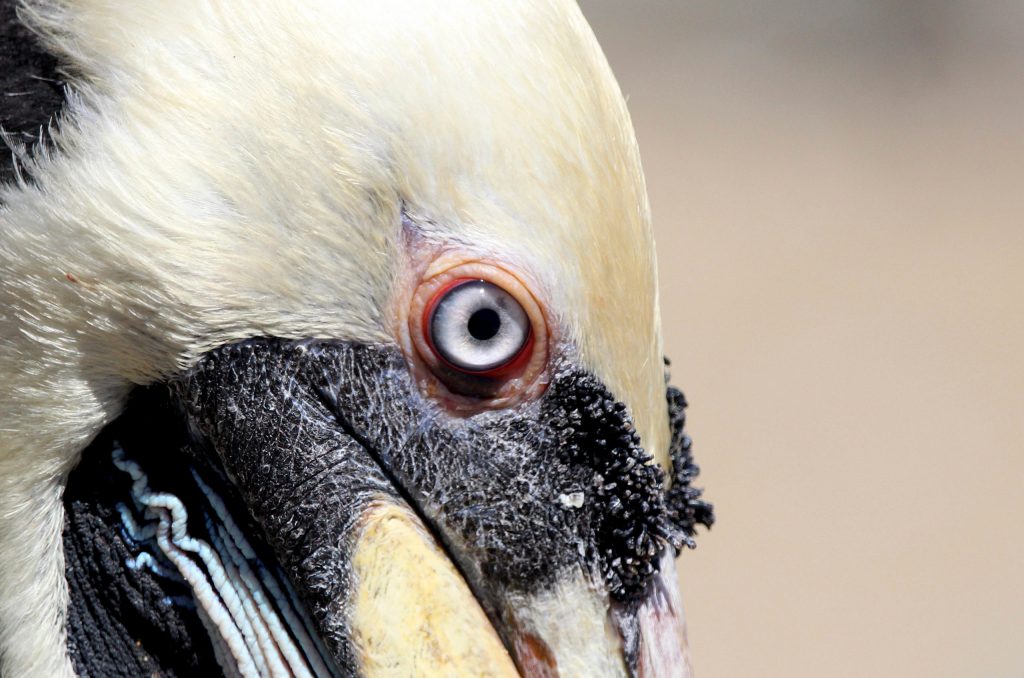



At the height of the irruption of newly arrived common wasps in South Island beech forests a Robin did to me what the finches do to the boobies. It started with eating fragments of coleslaw from my lunch, then a few sandflies off my legs, then the hook grass seeds hanging on leg hairs. When it’s attention started getting rather painful, I realised it’s yellow tongue had turned red. The little B@#$%rd had picked a scab and was drilling for meat. Quick learnings at a time when the wasps had cleaned out all the easy invertebrates.
Last year in early spring. I saw a video of a Rusty Blackbird swoop in and kill and eat a Carolina Wren in Missouri. I found it a little shocking for sure.
As I was a child, my family fed our cockatiels an egg mixture so they could regurgitate more protein for their brood of chicks. Therefore, although it was not entirely in the wild, per se, I have observed cockatiels, which normally eat seed and millet spray, eating scrambled eggs.
I have also unfortunately seen one baby cockatiel cannibalizing the other. This was years and years ago. I am no longer breeding that kind of bird. It’s a dog-eat-dog or a tweet-eat-tweet kind of world. It makes me think of that episode of Looney Tunes where Tweety Bird became gargantuan – hmm, I didn’t know they made a “return of Tweety Bird Monster” episode, but both are on Youtube.
How disgusting, keep up the great story-telling!
My grandchildren love it ! More blood & gore!
Yay!!!
I worked in a zoo, with American While pelicans. One of them would grab, and eat Euopean Starlings that got in it’s enclosure- much to the dismay of visitors. It would occasionally toss some of the smaller ducks around, but never actually swallowed one.
I once saw a Crow Eating the Head off of a Rabbit. It was Gross
Fascinating article! Thanks!
While I was in Florida recently, my family witnessed a snowy egret swallow a snake that was longer than the bird’s neck. The snake was moving and obviously still alive as it went down the bird’s throat.